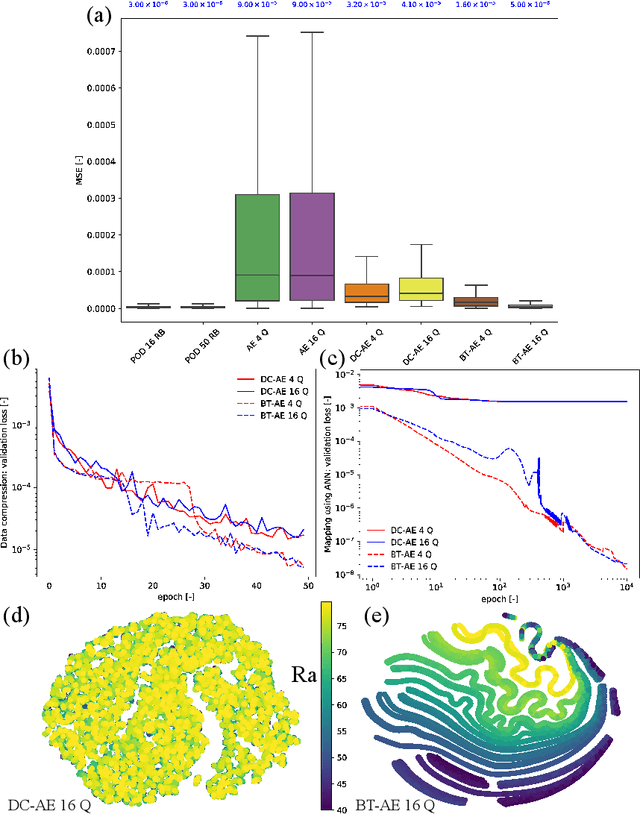Reduced order modeling with Barlow Twins self-supervised learning: Navigating the space between linear and nonlinear solution manifolds
Paper and Code
Feb 11, 2022



We propose a unified data-driven reduced order model (ROM) that bridges the performance gap between linear and nonlinear manifold approaches. Deep learning ROM (DL-ROM) using deep-convolutional autoencoders (DC-AE) has been shown to capture nonlinear solution manifolds but fails to perform adequately when linear subspace approaches such as proper orthogonal decomposition (POD) would be optimal. Besides, most DL-ROM models rely on convolutional layers, which might limit its application to only a structured mesh. The proposed framework in this study relies on the combination of an autoencoder (AE) and Barlow Twins (BT) self-supervised learning, where BT maximizes the information content of the embedding with the latent space through a joint embedding architecture. Through a series of benchmark problems of natural convection in porous media, BT-AE performs better than the previous DL-ROM framework by providing comparable results to POD-based approaches for problems where the solution lies within a linear subspace as well as DL-ROM autoencoder-based techniques where the solution lies on a nonlinear manifold; consequently, bridges the gap between linear and nonlinear reduced manifolds. Furthermore, this BT-AE framework can operate on unstructured meshes, which provides flexibility in its application to standard numerical solvers, on-site measurements, experimental data, or a combination of these sources.
 Add to Chrome
Add to Chrome Add to Firefox
Add to Firefox Add to Edge
Add to Edge